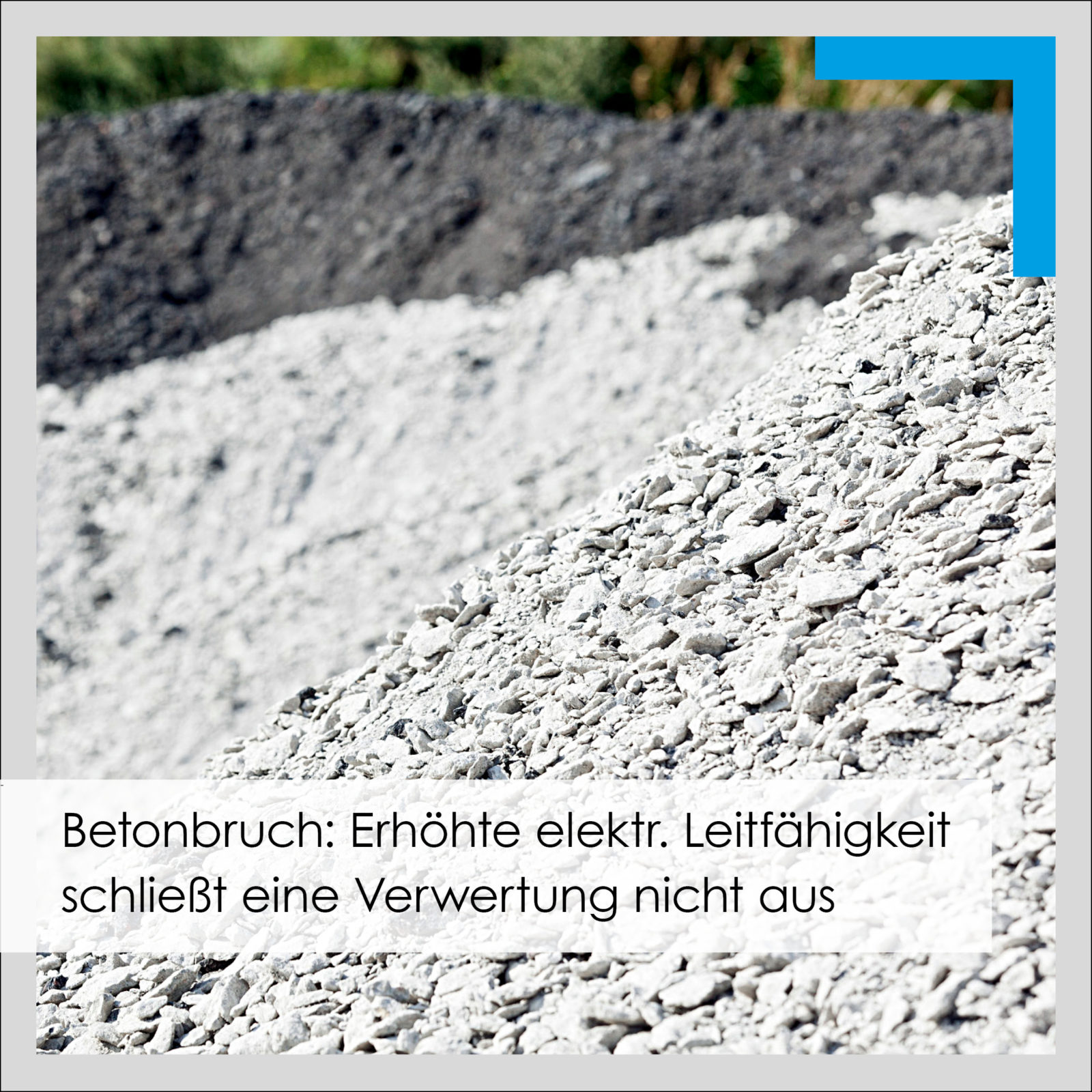Assessment principles for mineral construction waste: Increased electrical conductivity does not exclude recovery
Concrete demolition waste often shows an increased electrical conductivity in the eluate, which is also significantly above the classification values Z 2 of the Technical Rules for Construction Waste of LAGA Notice 20 and can thus lead to exclusion from recycling. In this case, it must be additionally checked whether this is merely a temporary phenomenon. This is because sampling often takes place during the demolition work. The concrete sample, which is crushed using an excavator chisel or hammer, is broken again in the laboratory to produce the eluate. Freshly broken surfaces contain free lime and alkaline earth compounds, which lead to a high conductivity in the eluate. During storage, absorption processes take place. Carbon dioxide from the air leads to the formation of alkali and alkaline earth carbonates, which result in lower conductivity. These absorption processes can be simulated in the laboratory by gassing with carbon dioxide. To support or accelerate the processes, water might possibly be necessary, as is the case with slags.
When is an exceedance of the conductivity parameter compatible with harmless recovery under the KrWG?
When assessing concrete quarry for recycling, an exceedance of the conductivity parameter is compatible with harmless recycling according to KrWG if
- the increased conductivity is accompanied by a high pH value,
- the allocation values of the respective installation class of TR Bauschutt of LAGA Notice 20 for chloride and sulphate are complied with,
- other salt contamination can be excluded,
- all other parameters comply with the value of the installation class and
- there is no suspicion of impurities that would have caused the increase in conductivity.
The TL Gestein (Technical Delivery Conditions for Aggregates in Road Construction) take this phenomenon into account for freshly crushed concrete in Appendix D in Table D.1. There it says under subitem 8: The value of the electrical conductivity "is not an exclusion criterion if the pH value is above 11.5 and the values for chloride and sulphate are complied with".
If the electrical conductivity corresponds to a high pH value with simultaneously low chloride and sulphate contents, it can be attributed to basic substances (including Ca-oxides, -hydroxides) from hydraulic binders that have not reacted completely (concrete approx. 90 M.-% in the sample). Increased electrical conductivity as a temporary phenomenon is not a criterion for exclusion, as it can be assumed that the calcium oxides and calcium hydroxides react to form carbonates when water and carbon dioxide are added.
If analyses of freshly crushed concrete show increased pH values and increased conductivities and the requirements mentioned are met, no new analysis is necessary. The reason for the exceedance - release of unreacted calcium hydroxide on the freshly crushed material - must be stated in the waste characterisation.
#mullandpartners #engineeringforabettertomorrow #news #conductivity #KrWG #construction waste
Business areas
Environmental and geotechnical engineering
Construction and project management
Renewable energies
Real estate development
Infrastructure
Water management
Societies
M&P Engineering Company
T&P Beratende Ingenieure
P&P Real Estate Consulting
P&B Real Estate Management
P&M Project Management
M&P Umwelttechnik
M&P Go.Blue.Now.
Contact

